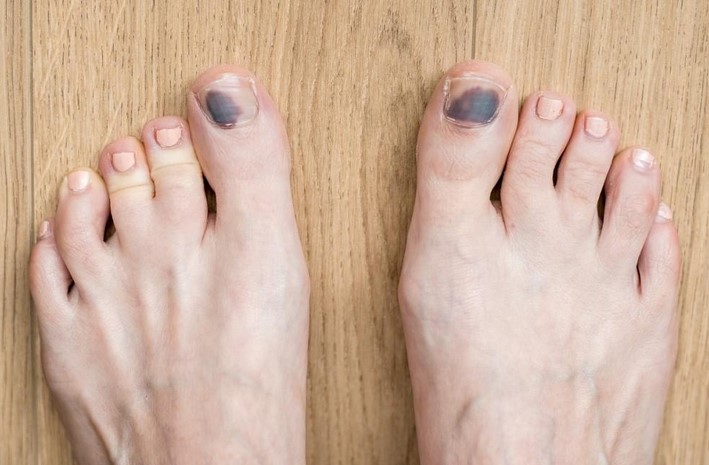
Runner’s toenail, also known as jogger’s toe, is a common condition among athletes, particularly those involved in running or other high-impact sports. It is characterized by black or purple discoloration of the toenail, often caused by repeated trauma or pressure on the toes. This article will delve into the causes of runner’s toenail, preventive measures to avoid this condition, and care tips for those who are already experiencing it. It aims to provide comprehensive information to help individuals maintain their foot health while pursuing their athletic endeavors.
Understanding Runner’s Toenail: Causes, Prevention, and Care Tips
Runner’s toenail, also known as jogger’s toe or black toenail, is a common condition among athletes, particularly those who engage in long-distance running. This condition is characterized by a discoloration of the toenail, often turning it black, and in severe cases, the toenail may fall off. Understanding the causes, prevention, and care tips for runner’s toenail can help athletes maintain their foot health and continue their running routines without discomfort or disruption.
The primary cause of runner’s toenail is repetitive trauma to the toe. This can occur when the toe repeatedly hits the front of the shoe during running, causing blood to pool under the toenail and leading to its discoloration. Other factors that can contribute to the development of this condition include wearing ill-fitting shoes, running downhill frequently, or having a naturally long second toe.
Preventing runner’s toenail involves several strategies. Firstly, wearing properly fitting shoes is crucial. Shoes that are too tight can cause the toes to press against the front of the shoe, while shoes that are too loose can allow the foot to slide forward, both of which can lead to repeated trauma to the toe. It is recommended to have a thumb’s width of space between the end of the longest toe and the front of the shoe.
Secondly, keeping the toenails trimmed can also help prevent this condition. Long toenails are more likely to hit the front of the shoe, causing damage. However, care should be taken not to trim the nails too short, as this can lead to other foot problems.
Lastly, using moisture-wicking socks can help keep the feet dry and reduce the risk of blisters, which can exacerbate the condition.
In terms of care tips, if you suspect you have runner’s toenail, it is important to monitor the condition closely. While the discoloration itself is not harmful, the pressure from the pooled blood can cause pain and discomfort. If the pain becomes severe, it may be necessary to see a doctor, who can relieve the pressure by draining the blood.
In most cases, the toenail will eventually fall off on its own, and a new one will grow in its place. During this time, it is important to keep the area clean and protected to prevent infection. Over-the-counter pain relievers can be used to manage pain, and icing the toe can help reduce swelling.
In conclusion, runner’s toenail is a common but preventable condition among athletes. By understanding its causes and implementing preventive measures such as wearing properly fitting shoes, keeping the toenails trimmed, and using moisture-wicking socks, athletes can reduce their risk of developing this condition. Furthermore, proper care and monitoring can help manage the condition and prevent complications. With these strategies, athletes can maintain their foot health and continue their running routines without disruption.Runner’s toenail, also known as jogger’s toenail, is a common condition among runners caused by the constant pressure and friction between the toes and shoes during running. This can lead to symptoms like discoloration, pain, and sometimes the toenail may even fall off. Prevention methods include wearing properly fitted shoes, keeping toenails trimmed, and using moisture-wicking socks. Care tips for those already suffering from this condition include keeping the area clean, avoiding further trauma by possibly reducing running intensity, and consulting a healthcare professional if symptoms worsen. Therefore, while runner’s toenail is a common issue, it can be managed and prevented with appropriate measures.